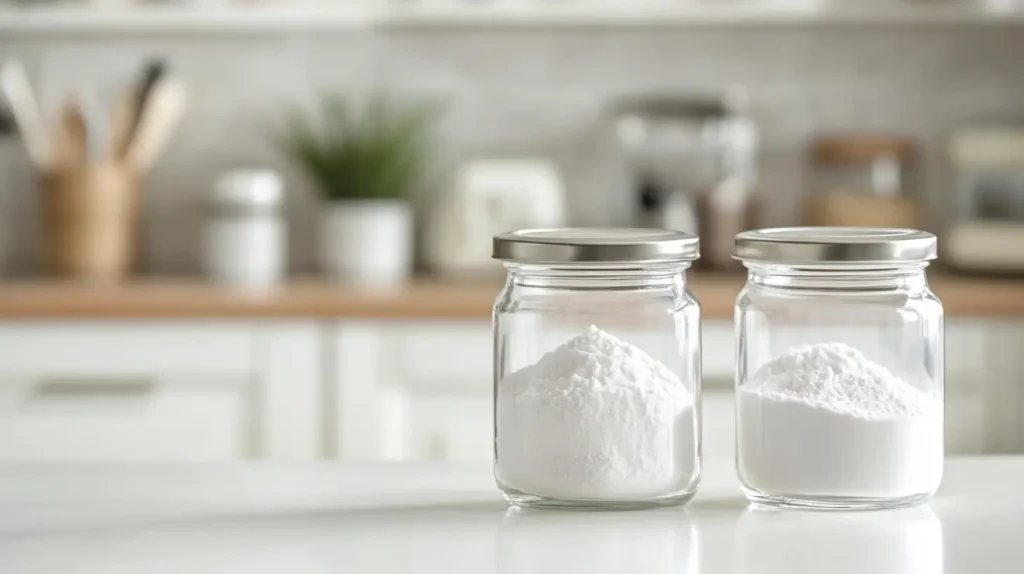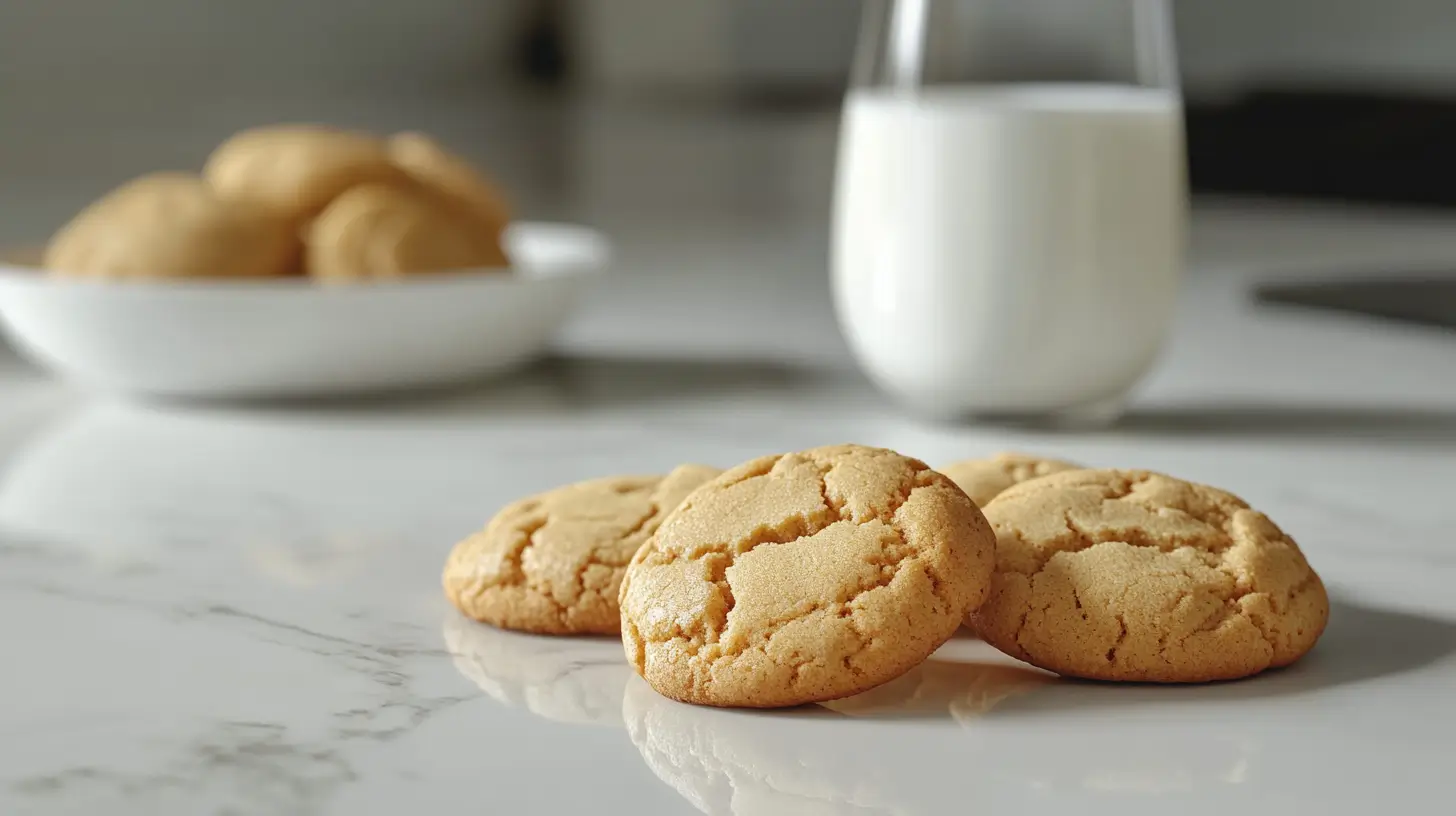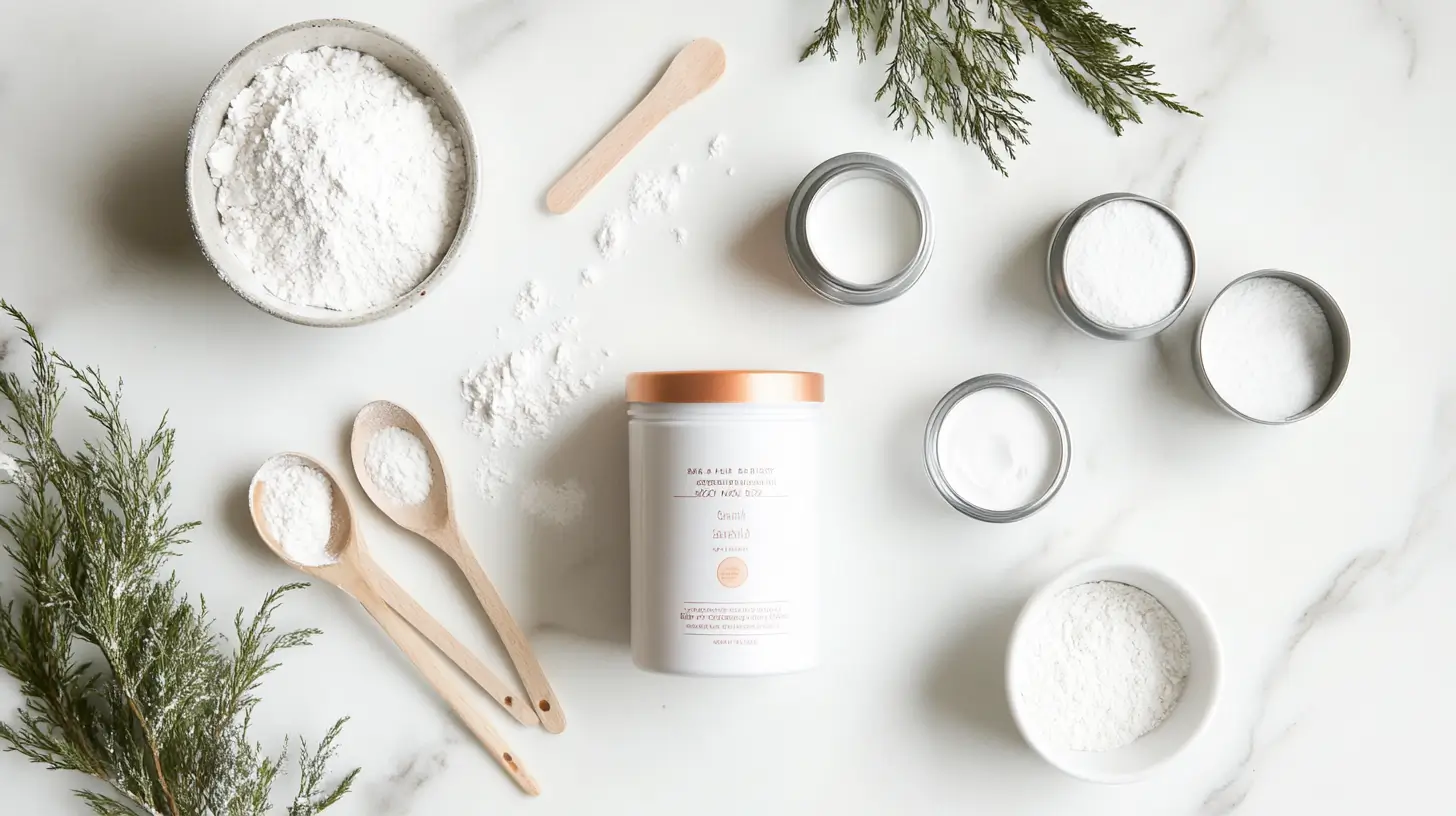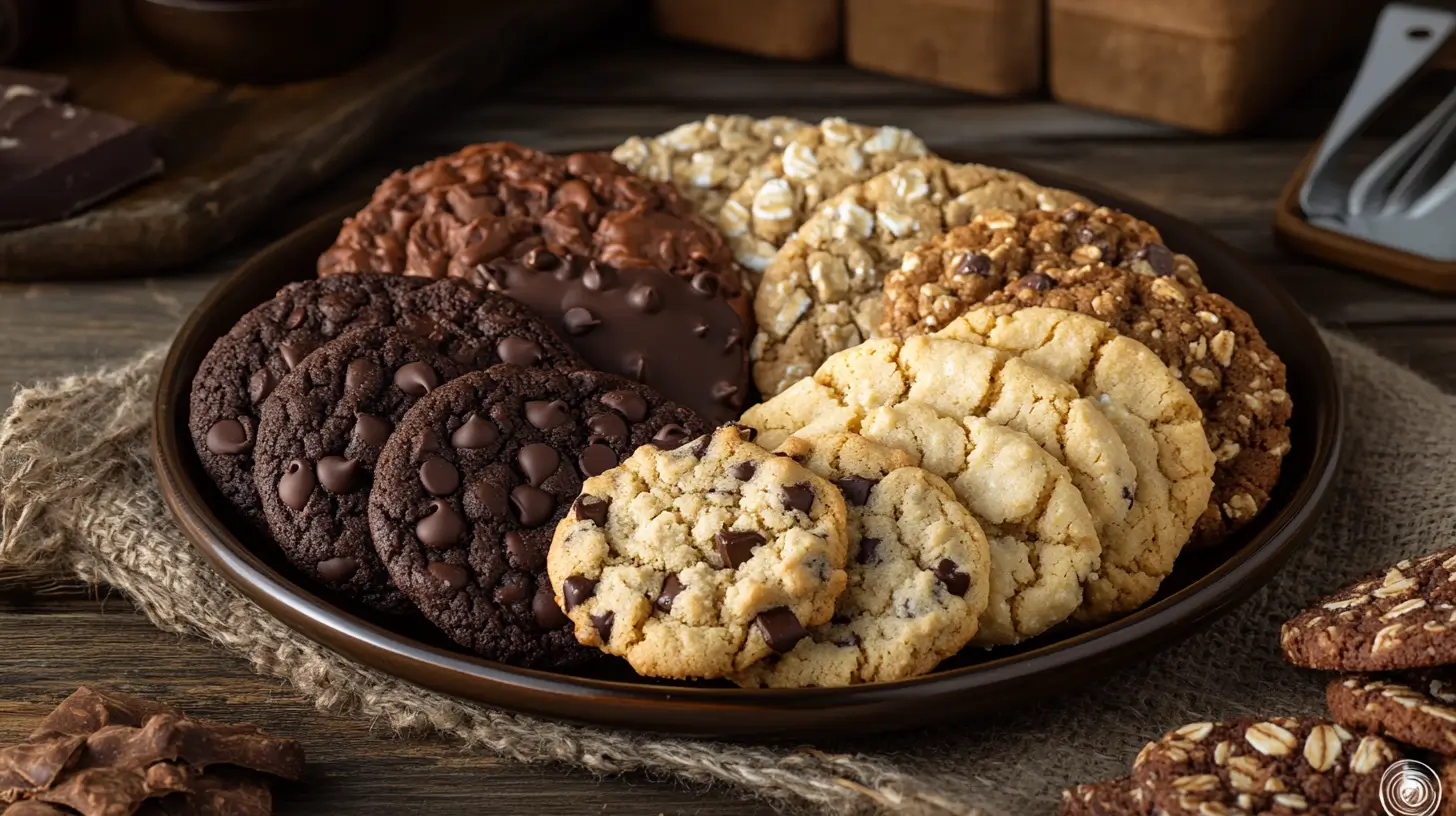Introduction
Baking soda and baking powder are essential ingredients in cooking and baking, but many people struggle to understand their differences. While they serve similar purposes, each has unique properties that make it better suited to specific recipes. Knowing when to use each one can significantly impact the outcome of your culinary creations. This article delves into their compositions, applications, and key distinctions, ensuring you choose the right ingredient every time.
Why Knowing the Difference Matters
Understanding the role of these leavening agents in your recipes is vital for consistent results. Baking is a science where the balance of ingredients determines texture, taste, and appearance. Misusing these leavening agents can lead to dense cakes, flat cookies, or overly bitter flavors. Whether you’re a novice or an experienced baker, learning how these substances work ensures every dish meets your expectations. Proper use also helps avoid waste, as recipes will turn out correctly on the first try.
What Is Baking Soda?
Composition and Properties
Baking soda, scientifically known as sodium bicarbonate, is a white crystalline powder that serves as a powerful leavening agent. It’s alkaline, meaning it reacts when combined with acidic ingredients like buttermilk, vinegar, or lemon juice. This reaction produces carbon dioxide gas, which causes doughs and batters to rise.
Its simple composition—just sodium, hydrogen, carbon, and oxygen—makes it a versatile household item beyond the kitchen. Baking soda’s properties include neutralizing odors, acting as a gentle abrasive, and maintaining pH levels. Understanding these characteristics ensures its proper application, especially when deciding between baking soda or baking powder.
How It Works in Recipes
When you add baking soda to a recipe, it needs an acidic counterpart to activate its leavening power. Without acid, the baking soda remains inert, leaving baked goods dense. The chemical reaction begins immediately upon mixing wet and dry ingredients, making it crucial to bake the mixture promptly.
For example, when baking cookies or muffins, the inclusion of an acidic component like brown sugar or yogurt activates the baking soda. The result is a light and fluffy texture. Comparing these leavening agents reveals that soda’s reaction is more immediate, making it ideal for recipes requiring quick baking.
What Is Baking Powder?
Types of Baking Powder
Unlike baking soda, baking powder is a complete leavening agent containing both an acid (usually cream of tartar) and a base (sodium bicarbonate). There are two main types: single-acting and double-acting.
- Single-acting baking powder reacts once when it gets wet.
- Double-acting baking powder produces gas in two stages: upon mixing with liquid and again during baking due to heat.
Understanding these types is essential when deciding whether to use baking soda or baking powder in a recipe, as their timing and effects differ.
How It Reacts in Baking
Baking powder simplifies baking because it doesn’t require an external acidic ingredient. Its built-in acid ensures a consistent rise, even in neutral recipes like sponge cakes or pancakes. Double-acting varieties provide a second rise in the oven, giving baked goods a consistent and airy texture.
However, using baking powder in recipes already containing acidic ingredients can lead to an overpowering taste or improper texture. When evaluating baking soda or baking powder, the choice often hinges on the recipe’s pH balance.
Key Differences
Composition
The primary distinction between these leavening agents lies in their ingredients. Baking soda is a single compound, while baking powder combines multiple components. This difference affects how they interact with other ingredients and their leavening mechanisms.
Usage Scenarios
Baking soda is ideal for recipes containing natural acids, such as buttermilk biscuits or chocolate cakes, while baking powder works well in neutral recipes like shortbread or pound cake. Understanding these usage scenarios ensures your baked goods achieve the desired consistency and flavor.
When to Use Baking Soda
Common Recipes
You’ll often find baking soda in recipes with acidic components, as its reaction enhances both texture and taste. Some examples include:
- Chocolate chip cookies, where brown sugar activates the soda.
- Banana bread, which uses the acidity of ripe bananas.
- Buttermilk pancakes, ensuring light and fluffy results.
Choosing baking soda or baking powder depends on the recipe’s balance of acidic and neutral ingredients.
Signs You Need Baking Soda
If your recipe calls for a strong, immediate rise and includes acidic ingredients, baking soda is the right choice. For instance:
- Doughs that spread, like sugar cookies.
- Quick bread requiring a rich, dense crumb.
- Recipes where a crisp texture is desired.
Understanding these signs helps avoid overusing baking soda or baking powder, preventing an unpleasant aftertaste.

When to Use Baking Powder
Popular Recipes
Baking powder is a go-to ingredient for recipes that lack naturally acidic components. Its self-contained leavening properties make it ideal for light and fluffy baked goods. Popular recipes that benefit from baking powder include:
- Pancakes, where double-acting powder ensures a consistent rise.
- Muffins, creating airy textures with minimal effort.
- Sponge cakes, which rely on steady leavening to maintain structure.
When considering baking soda or baking powder, the last one shines in recipes requiring a balanced rise without external acids.
Indicators for Use
Recognizing when to use baking powder ensures optimal results. Look for these indicators:
- The recipe lacks acidic ingredients, such as plain milk or water.
- A neutral flavor profile is desired.
- The leavening process needs to occur gradually, as in double-acting baking powder.
Understanding these situations simplifies the decision between baking soda or baking powder.
Baking Tips for Beginners
Measuring Accurately
Proper measurement of baking soda or baking powder is critical for successful baking. Use these tips to ensure accuracy:
- Always level off measuring spoons for consistency.
- Avoid packing the ingredient, as this can lead to over-measuring.
- Follow the recipe’s specified amounts to prevent overpowering flavors or failed rises.
Storage Tips
Maintaining the potency of baking soda or baking powder requires careful storage. Keep these tips in mind:
- Store in airtight containers to prevent moisture exposure.
- Keep away from heat sources or direct sunlight.
- Label containers with purchase dates to track freshness, as leavening agents lose effectiveness over time.
Substitution Strategies
Running out of baking soda or baking powder doesn’t have to ruin your recipe. Knowing how to substitute safely ensures your baked goods turn out as expected. Here are some examples:
- Replace 1 teaspoon of baking powder with ¼ teaspoon baking soda and ½ teaspoon cream of tartar.
- Use baking powder as a substitute for baking soda by increasing the amount, but keep in mind this may slightly alter the flavor.
How to Substitute Safely
Substituting baking soda or baking powder requires careful adjustments to maintain the intended rise and texture of your recipe. Always follow tested substitution ratios and be mindful of other ingredients that may affect the outcome. Precise measurements are key to achieving a balanced result.
Impact on Flavor and Texture
Substituting these leavening agents can impact both flavor and texture. Baking soda’s concentration can lead to a bitter aftertaste if overused, while baking powder’s neutral profile ensures consistency but may impart a chemical taste when used excessively. To avoid these issues:
- Adjust the quantities based on recipe requirements.
- Consider the pH balance of the ingredients to ensure the substitution complements the dish.
Myths and Misconceptions
Common Baking Myths
Misinformation about these leavening agents can lead to baking disasters. Some common myths include:
- Using them interchangeably without adjustments is fine.
- More leavening agent always results in fluffier baked goods.
- Baking powder is just baking soda with cornstarch.
Debunking Misunderstandings
Clarifying these misconceptions ensures better baking results:
- Baking soda or baking powder cannot always replace each other due to differences in acidity and leavening processes.
- Excessive leavening agents can cause baked goods to collapse.
- Baking powder contains built-in acid, unlike plain baking soda.

Scientific Insights
How Acids and Bases Interact
The interaction of acids and bases is the foundation of how baking soda or baking powder works. Baking soda reacts with acids to produce carbon dioxide gas, which expands and creates air pockets. Baking powder simplifies this process by containing both components, making it versatile for recipes without natural acidity.
The Role of Temperature
Temperature is vital for activating leavening agents. Baking soda reacts immediately, while double-acting baking powder benefits from heat to trigger its second rise. Preheating your oven is essential for achieving the best results.
FAQs About Baking Soda or Baking Powder
When should I use baking powder?
Baking powder is ideal for recipes without acidic ingredients, as it contains both an acid (cream of tartar) and a base (baking soda). This allows it to leaven baked goods independently, making it perfect for neutral recipes like sponge cakes, biscuits, and pancakes. Double-acting baking powder is especially useful for recipes requiring longer baking times, as it provides two stages of rising—when mixed with liquid and again when heated. It’s the best choice when you want to avoid the tangy flavor that acidic ingredients might add or when precision is key. If your recipe lacks items like yogurt, vinegar, or citrus juice, baking powder is the right option. Always measure carefully, as using too much can negatively affect flavor and texture.
What is baking powder used for in recipes?
Baking powder is a reliable ingredient that creates light, airy textures in baked goods. It releases carbon dioxide gas when it interacts with liquid and heat, helping batters or doughs rise. Unlike baking soda, which needs an acidic ingredient to activate, baking powder has its own built-in acid, making it ideal for recipes without acidic components. It’s commonly used in cakes, muffins, quick breads, and pancakes, where a consistent rise is key to achieving fluffiness and structure. This leavening agent is particularly valued for its ability to maintain neutral flavors, ensuring that the taste of the baked goods remains unaltered. Double-acting baking powder, which produces gas in two stages—during mixing and baking—ensures even cooking and a dependable rise. When used properly, baking powder enhances both the texture and appearance of your creations, making it a go-to item in many kitchens.
What is the purpose of using baking soda or baking powder?
These leavening agents are essential for helping doughs and batters rise. Baking soda, a base, reacts with acidic ingredients such as buttermilk, vinegar, or lemon juice to produce carbon dioxide, forming air pockets that create light and fluffy textures in baked goods like cookies or banana bread. Baking powder, which contains both a base and an acid, is a self-sufficient leavening agent ideal for recipes without acidic components, such as pancakes or sponge cakes, where a steady and controlled rise is necessary. Choosing the appropriate agent depends on the recipe’s acidity and the desired result. These ingredients play a crucial role in achieving the perfect texture, height, and consistency in baked goods. By understanding how they work, you can avoid common baking issues like dense or collapsed structures and enjoy consistently successful culinary results.
Does baking soda expire?
Yes, baking soda expires over time and loses its effectiveness as a leavening agent, even though it doesn’t spoil or become unsafe to use. Expired baking soda won’t produce the desired rise in recipes, leading to dense or flat baked goods. To test its potency, mix a small amount (about ¼ teaspoon) of baking soda with 2 tablespoons of vinegar. If it fizzes vigorously, it’s still active; if not, it’s time to replace it. Proper storage can help prolong its shelf life—keep it in a tightly sealed container in a cool, dry place away from moisture and heat. Baking soda is typically effective for six months to a year after opening. For non-baking uses, such as cleaning or deodorizing, expired baking soda may still work but with reduced efficiency. Regularly replacing baking soda ensures that your recipes turn out as expected and your other uses remain effective.
Conclusion
Choosing between baking soda or baking powder can make or break your recipe. By understanding their compositions, uses, and differences, you can confidently tackle any baking challenge. With proper measurements, storage, and substitution strategies, these versatile ingredients will elevate your baking skills, delivering perfect results every time.





